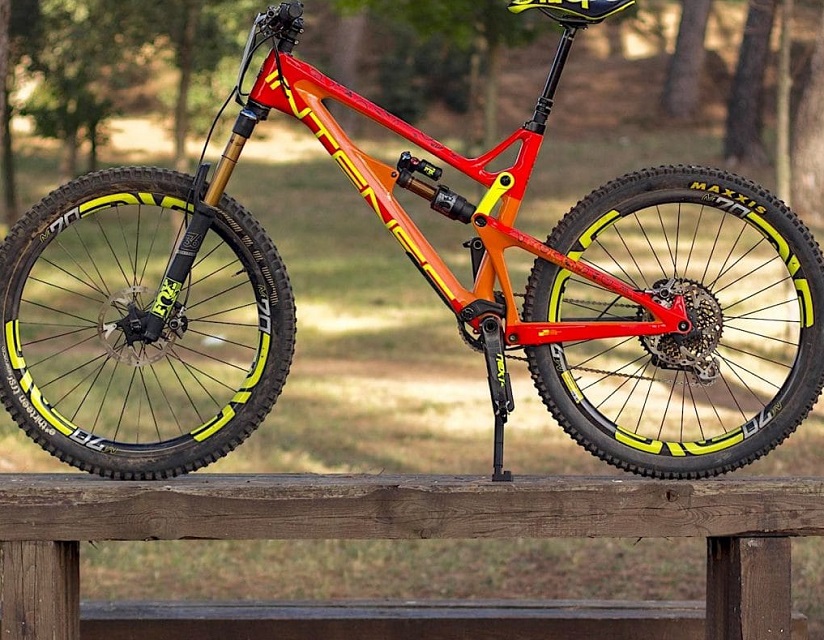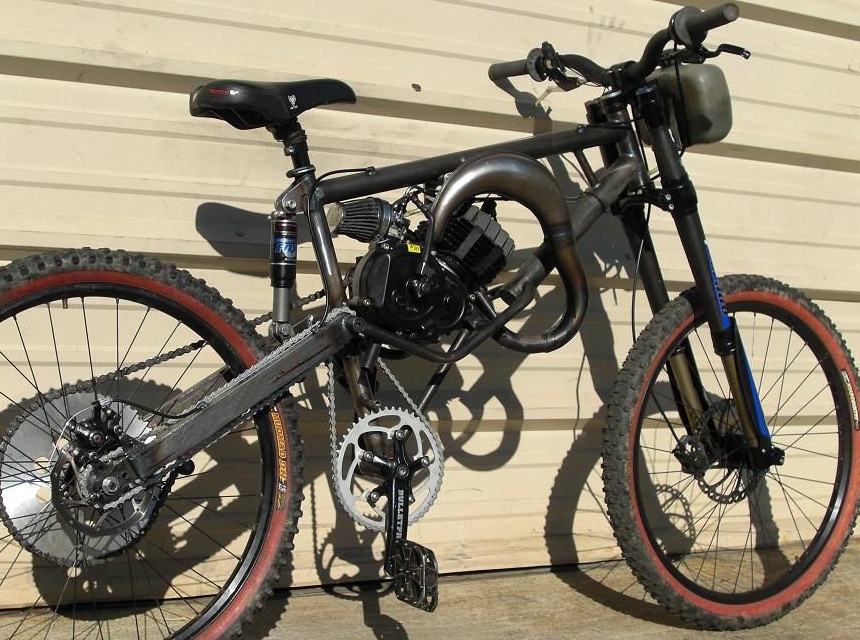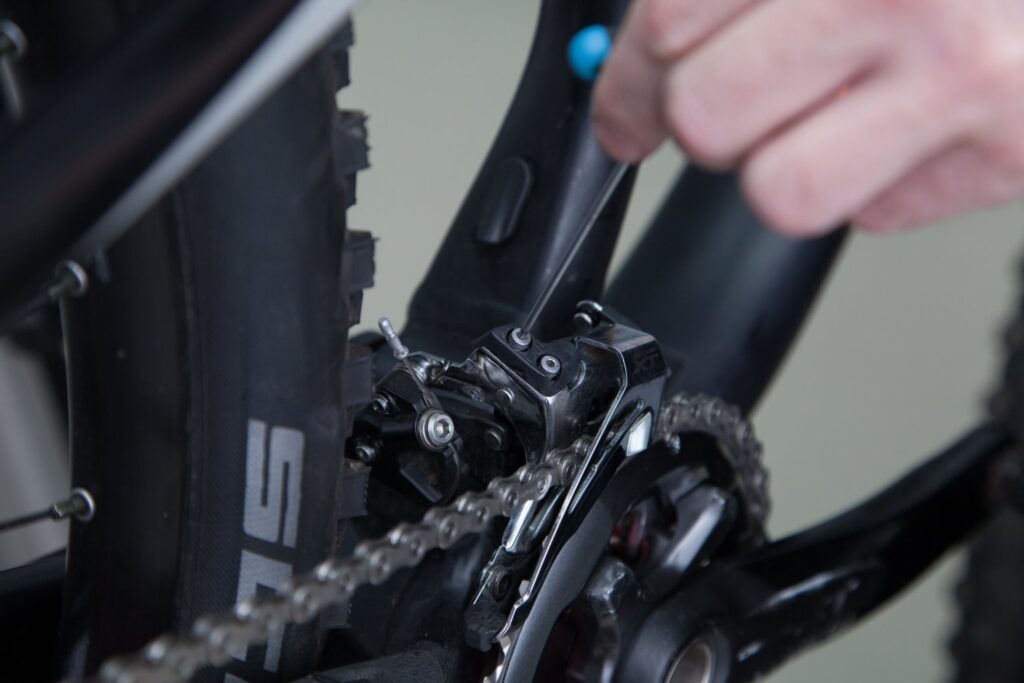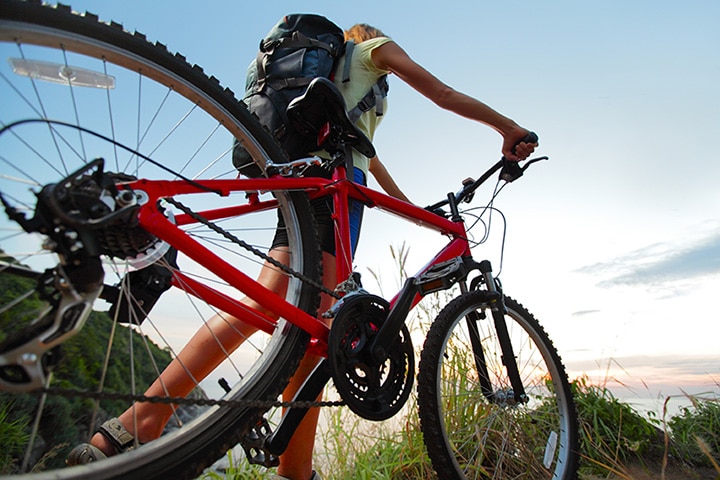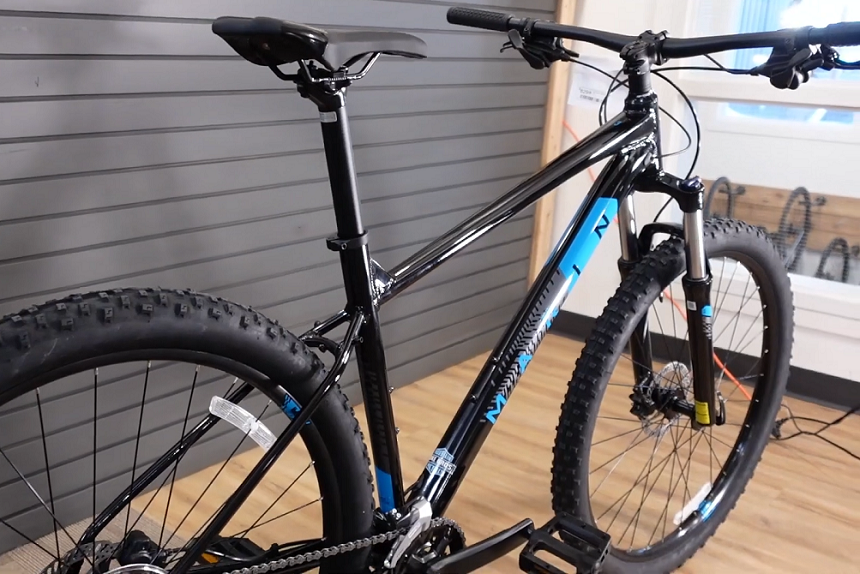- Trails
-
Bikes
-
Gear
-
Tips & Tricks
-
About us


The debate of full suspension vs hardtail bikes is a constant debate among new and old riders. We commonly see this debate going on among mountain bikers. It is impossible to overemphasize the importance of suspension. The rough topography of mountain terrain makes it quite difficult to have good control over your bike. However, with good suspensions, you will have better control, irrespective of the roughness of the terrain. Research Trusted Source Bicycle shock absorption systems - PubMed Bicycle suspension systems have been designed to improve bicycle comfort and handling by dissipating terrain-induced energy. However, they may also dissipate the cyclist’s energy through small oscillatory movements, often termed ‘bobbing’, that are generated by the pedalling movements. This phenomenon is a major concern for competitive cyclists engaged in events where most of the time is spent climbing, e.g. off-road cross-country races. pubmed.ncbi.nlm.nih.gov also shows that it significantly increases comfort.
However, choosing a suitable suspension for your bike is entirely different. They come in varying types, sizes, and materials which significantly gives you an edge over one another. There are so many takes on which one is better than the other, and it can be quite confusing. As you read on, we aim at easing your confusion and helping you to decide which one suits you best. We will carefully analyze full suspension and hardtail bikes and show you their advantages over each other. In the end, you will be able to choose which one suits you; what are you waiting for? Let’s go!
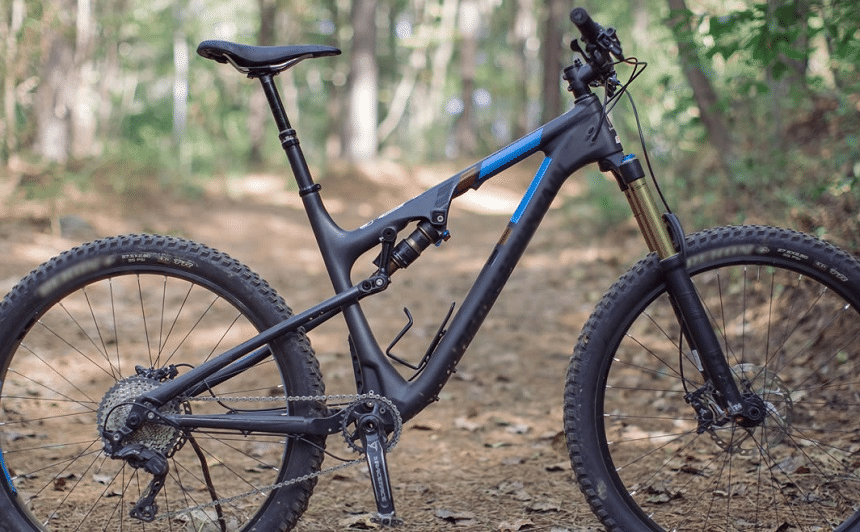
As the name implies, a full-suspension bike is loaded with a rear shock and a suspension fork. Double suspension aims to give the rider better control, comfort, and capability. Since studies show the frequency of accidents Trusted Source Severe street and mountain bicycling injuries in adults - PMC Street and mountain bicycling are popular recreational activities and prevalent modes of transportation with the potential for severe injury. The purpose of this investigation was to compare the incidence, risk factors and injury patterns among adults with severe street versus mountain bicycling injuries. www.ncbi.nlm.nih.gov in rough terrains, they come in handy.
The rear shock suspension would give better traction regardless of how rough your riding track may be. So instead of bouncing off bumpy areas which could make you lose give, you get an unusually smooth feel.
Full suspension riders attest to the higher confidence and morale. A smooth ride with little resistive force would also make you less fatigued, so you will ride for longer periods. PXQ showcases what a typical full-suspension mountain bike should look like.

Due to the less bulky build, they are lighter and seemingly swift in smooth terrain. However, these variants are not suitable for difficult terrains. This bike category excels better in slower terrains and areas where the dirt could increase your traction. Hardtails don’t provide so much comfort but expose you to direct hands-on biking. Since there is no increased control and handling, many suggest that riding these bikes makes you a better rider.
Hardtail bikes are not only for kids but also for adults. Schwinn Mesa showcases some great adult designs. While riding hardtail bikes, you need to be very sensitive and anticipate some unexpected shifts. You also need to be deliberate about the part you trail and avoid excessively rough terrains. On the bright side, they are notably faster when you climb and ride on smooth paths. Some experts advise hardtail bikes for beginners starting on easy terrains. Cross-country riders also use hardtail bikes.
| Type of Bike | Pros | Cons |
| Full-suspension bikes |
|
|
| Hardtail bikes |
|
|
You should have a good knowledge of both full suspension and hardtail bikes. It still boils down to the one that is most suitable for you. While full suspension seems to have the better features, your pick should still be based on some considerations; hence, it will be useless. These factors would guide you in knowing which variant of hardtail or full-suspension mtb is more suitable for you:
Where do you plan on riding your bike? How smooth is the path? Are you an intense rider who is heavily involved in mountain riding? Or you ride on smoother paths and may do some cross-country racing? Riding the wrong type in rough terrains is hazardous as bike injuries are very serious Trusted Source Injuries related to bicycle accidents: an epidemiological study in The Netherlands | SpringerLink Bicycle accidents resulting in hospitalization in a level-I trauma center in The Netherlands between 2007 and 2017 were retrospectively identified. We subcategorized data of patients involved in a regular bicycle, race bike, off-road bike or e-bike accident. The primary outcomes were mortality rate and incidence of multitrauma. Secondary outcomes were differences between bicycle subcategories. Independent risk factors were identified using multivariable logistic regression. All variables with a p value < 0.20 in univariable analysis were entered in multivariable analysis. link.springer.com .
A hardtail bike would be sufficient if you ride in smoother terrain with fewer bumps and resistance. However, if you take mountain biking seriously and love to explore rougher terrains, then a full suspension bike will come in handy.
If your terrain involves a lot of climbing, you need something lightweight. Speed is not also a major priority as you are after maximum efficiency. Hardtails fit perfectly into such a profile. On the other hand, if your terrain is one with a lot of descent, your priority is a bit different. You need maximum control and all the smoothness you can muster as you descend. The better option would be the full-suspension bike in such a case.
Cost is a major limiting factor for many riders. Although full suspension and hardtail bikes are less costly, if you want to go with the most advanced ones, they may be pricey. Overall, hardtail bikes tend to be on the cheaper side. However, with the seemingly pricey full-suspension bike, you get loads of advanced technology, so you get value for your money.
Maybe you didn’t know before, but riding style is a major consideration for the variant you should pick. If you prioritize your comfort and smooth rides, your pick should be the full-suspension bike. On the other hand, if you like efficiency with more exercise, especially for cross country racing Trusted Source Exercise Intensity and Pacing Pattern During a Cross-Country Olympic Mountain Bike Race - PMC he highly variable pacing pattern in XCO implies the need for rapid changes in metabolic power output, as a result of numerous separate short-lived >CP actions which decrease in magnitude in later laps, but with little lap-to-lap variation in number and duration. www.ncbi.nlm.nih.gov , you should not hesitate to choose the hardtail bike.
For beginner mountain bikers, a hardtail bike can be a good option as it is typically less complex and easier to maintain compared to a full-suspension bike. Hardtail bikes are also generally more affordable and lighter, making them easier to handle for those who are new to mountain biking.
However, if you plan to ride on more challenging terrain or encounter a lot of rough and bumpy sections, a full-suspension bike may be a better choice. The rear suspension on a full-suspension bike will provide better comfort and control, allowing you to ride over obstacles more easily and with greater stability.
Hardtail and Softail are two types of mountain bikes that differ in their suspension system.
A hardtail mountain bike has a suspension fork in the front, but no rear suspension. This results in a more efficient and lighter bike, which is better suited for smooth and fast riding on moderate terrain.
A softail mountain bike, on the other hand, has a rear suspension system that helps absorb impact and provides greater control and comfort on rough and challenging terrain. The rear suspension system also adds weight to the bike and can affect the pedaling efficiency.
In summary, a hardtail mountain bike is best for riders who prioritize speed and efficiency, while a softail mountain bike is better for those who value comfort and control on rough terrain. The choice between the two ultimately depends on the rider’s riding style and preferences.
We are finally drawing close to this eye-opening comparison. Knowing the difference between a hardtail and full suspension isn’t so difficult. From the build, shape, size, and weight, you will be able to tell which one comes with a rear shock suspension. As popular as the debate is, it is unnecessary to engage in the full suspension vs hardtail argument. Each bike has its strong point and area of excellence. It is only a matter of picking the one that suits you best.
A full-suspension bike may be fancy and appealing compared to its hardtail counterpart; if you don’t need its functions, you will find it useless. It would only be a waste of money, and you might get frustrated with the bulkiness. The bottom line is to pick what suits you best. You have the necessary criteria, so carefully evaluate which one suits your needs. Don’t forget that a good suspension Seatpost is also important, especially if you ride for long.
